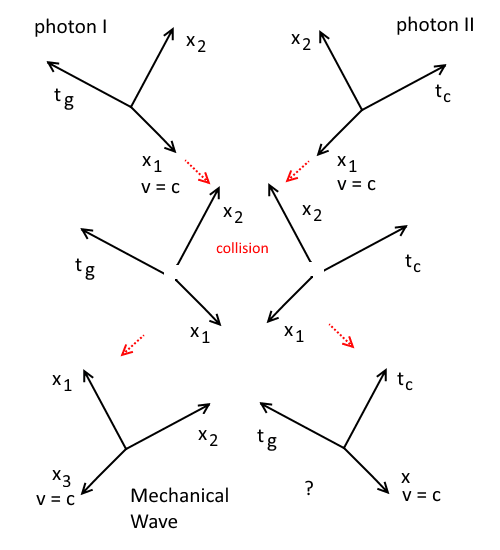After the collision, we have a mechanical wave and a particle postulated in the post "Scintillations In Time", possibly a neutrino. It is also possible that,
The collision results in a charge being created. In this case a simultaneous momentum exchange between two pairs of axes, each pair with one axis on each particles, resulted in a photon II and a charge.
Below is another example of particle collision.
In this case, one axis with light speed is paired with another axis on the other colliding particle not at light speed, and their velocity swapped. Two such velocity swap occurs simultaneously during a single collision. It would seem that the particle has swap velocity among its axes and rotated. This mechanism is different from where the axes seem to breakup and re-assemble which would require multiple velocity swaps.
However whether such collisions occur under normal circumstances and the result of such collisions being possible is speculative.
The existence of such particles is theoretical, but the way they will collide is certain.


